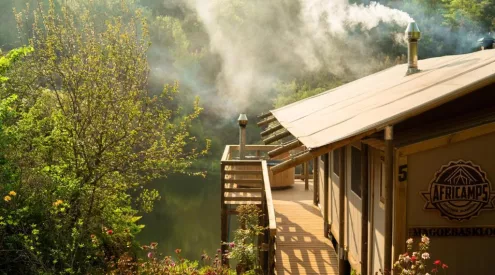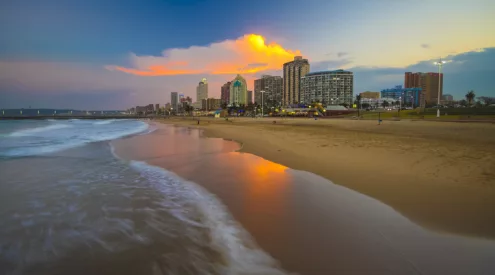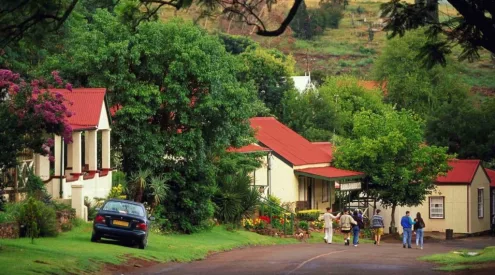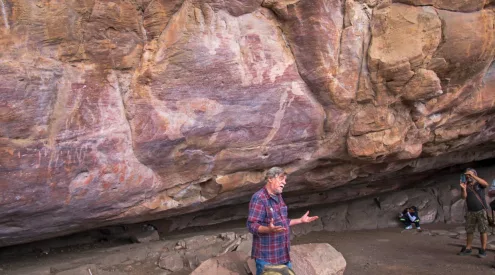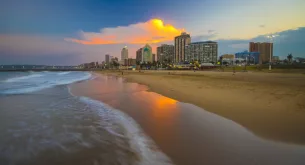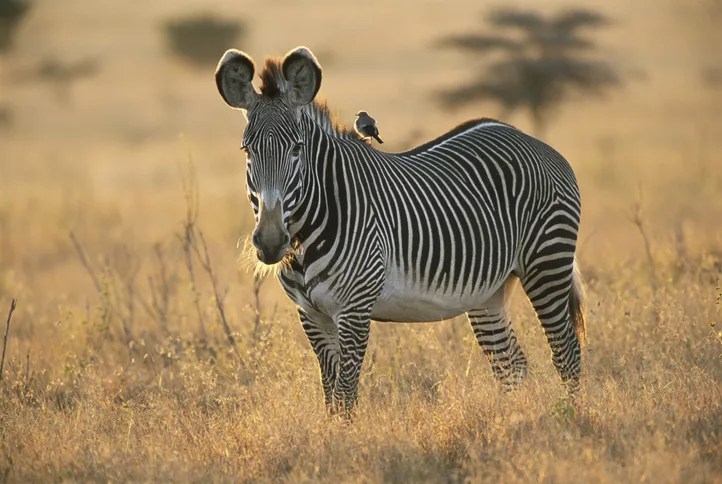
Image: Getty
Africa is home to some of the world’s most incredible – and endangered – wildlife. From the critically endangered black rhino to the elusive mountain gorilla, thousands of species face threats of extinction from loss of habitat, climate change, and poaching.
ALSO READ: Beyond Kruger – 25 incredible wildlife reserves to visit if you can’t get to Kruger
Ethical tourism is becoming more and more popular; Google searches have risen by 242% in the last 3 months alone, and safari-goers in 2025 are seeking conservation-focused experiences and off-the-grid destinations.
Travel expert Justin Chapman at Go2Africa reveals the best places to see six of the most endangered animals in Africa and gives top tips for ethical tourism, for once-in-a-lifetime experiences that aren’t only good for Africa, but good for the soul.
Namibia: Black rhinos
The black rhino population has declined by over 90% in the last century – due to habitat loss and illegal poaching for their horns, which are highly valued for traditional medicine – making them one of the most critically endangered animals in Africa. Thanks to conservation efforts, their numbers have risen from around 2,300 in the 1990’s to over 6,000, although that figure has slightly declined due to heavy poaching.
Namibia has the highest population of black rhinos, with most of them found in Etosha National Park, where you can also three others of the famous ‘big five’ – elephants, lions, leopards.
Rwanda: Mountain gorillas
With only around 1000 left in the wild, mountain gorillas are one of the most endangered great apes, due to poaching and deforestation, but their numbers are slowly increasing, thanks to strict conservation efforts. You can’t find a mountain gorilla in a zoo – they can only be found in their natural habitat of high-altitude forests, and seeing them in the wild is one of Africa’s most thrilling wildlife experiences.
Rwanda gorilla tours are the perfect way to see them – with over half of the world’s surviving mountain gorilla population, it’s no wonder that most wildlife-enthusiasts come to Rwanda to track and spend time with these critically endangered primates up-close. Tourism helps to support local communities and protect the gorillas, to help increase their numbers.
Botswana: African bush elephants
The African bush elephant is the largest land animal on Earth, and is famous for their intelligence, complex social structures, and iconic status as one of the ‘big five’. However, they are endangered due to habitat loss and poaching, primarily for their ivory tusks; in fact, in the last century, 90% of Africa’s elephants have been wiped out due to how valuable their tusks are on illegal markets.
In Botswana, Chobe National Park is known as the ‘elephant capital of Africa’ – with an estimated 120,000, it’s home to the highest concentration of elephants in Africa. Botswana has some of the strongest anti-poaching laws in Africa, which is largely funded by tourism; money from tourists, like entrance fees to the park, go towards anti-poaching patrols, and directly support conservation projects.
Kenya: Grevy’s zebra
Grevy’s zebras are the rarest of zebra species, and due to habitat loss and competition with livestock like cattle and goats, that overgraze the land and leave little food for the zebras, there are only around 3,000 remaining. However, community conservancies – which are areas where natural resources are actively managed by local communities – are supported by eco-tourism and reduce the need for hunting and overgrazing.
Around a third of remaining Grevy’s zebras can be found in Samburu National Reserve in northern Kenya, which is one of the most scenic parks in Kenya and is widely considered to be the best place in the world to see Grevy’s zebras in the wild.
Liberia: Pygmy hippo
Deforestation for faming has destroyed large areas of the habitat of the pygmy hippo, and in some cultures, hippo parts are poached for traditional medicine, which means there are less than 2,500 left in the wild. Due to their shy nature, many local communities don’t know that they are endangered, so tourism helps educate locals, as well as visitors, on their importance to the ecosystem, and promote coexistence strategies between humans and wildlife, like buffer zones between hippo habitats and farms.
One of the highest populations of pygmy hippos can be found in Liberia, particularly in Sapo National Park, which is the country’s largest protected area. It is also home to other rare and endangered species, including West African chimpanzees, forest elephants, and leopards.
Madagascar: Lemurs
The most iconic species that are most closely associated with Madagascar are, of course, lemurs. With their large eyes, acrobatic behaviour and multi-hued coats, lemurs are a type of primate that are distinct from apes and monkeys. They are the island’s biggest attraction, as they can only be found in Madagascar, but due to deforestation, hunting, and climate change, 98% of lemur species are endangered, or critically endangered.
Tourism helps conservation in Madagascar, with national park fees funding anti-poaching efforts, and eco-tourism creating jobs for locals that don’t include hunting and deforestation that is so damaging to wildlife.
How do I make sure my trip is ethical?
When done correctly – and ethically – tourism can be a powerful tool to help conservation. Responsible tourism helps to fund habitat conservation and wildlife protection, and can have a huge positive impact on the endangered species and local communities. So how can you make sure that your tour is ethical?
Ethical tourism prioritises the welfare of the animals, without them being exploited, like animals that are sedated for tourists to have photos with them. It ensures that tourism doesn’t damage, or destroy, ecosystems and natural habits of the animals, and that the benefits go directly to supporting wildlife protection and conservation.
Conservation projects are gaining momentum as travellers request hands-on conservation activities and lodges prioritise electric vehicles and solar power.
Tips for ethical & responsible tourism
- Hire local guides to support local people who know the land best.
- Stay in community-owned lodges that also employ local people and invest in local communities.
- “Take only photos, leave only footprints”; don’t remove anything like rocks, shells, or plants, from their natural environment.
- Keep a safe distance and respect the space of the animals. Always follow the guides instructions, and don’t ask them to get you closer than you should to get a better photo.
- Avoid excessive vehicle use; tours that use electric vehicles are more sustainable, but walking safaris can cause less damage to the animals’ natural habitats.
- Follow the rules of the parks – no loud noises, no feeding animals, and no littering.
- Respect local cultures; learn about their local traditions, customs, and language. Be mindful of dress codes, especially in rural or religious countries, and always ask for permission if taking photos of locals.
- Instead of imported, mass produced souvenirs, buy authentic handmade food and crafts that are made by local people, but be wary of products made from things like ivory that come from endangered animals.
- Instead of simply sightseeing, consider volunteering with a conservation group.
- Consider travelling off-peak; visiting in the low season reduces overcrowding and the strain on the animals and environment, and also helps local economies by spreading tourist revenue throughout the year.
- Ask yourself questions like are the animals in their natural habit, or are they kept in enclosures for tourist entertainment? Does the organisation have a clear mission for rehabilitation and conservation? Are the interactions natural, or do they involve taking selfies with the animals, bottle-feeding cubs, or riding elephants? If the answers are no, the tour is likely be unethical, and it might be a good idea to look for something different.
WATCH: Lions enjoy some water fun
Follow us on social media for more travel news, inspiration, and guides. You can also tag us to be featured.
TikTok | Instagram | Facebook | Twitter



